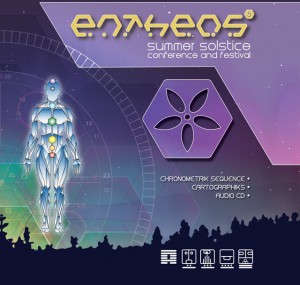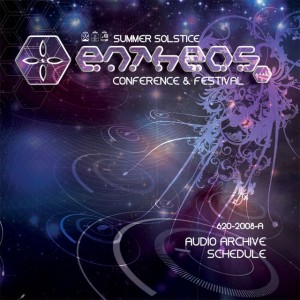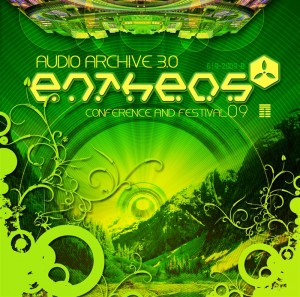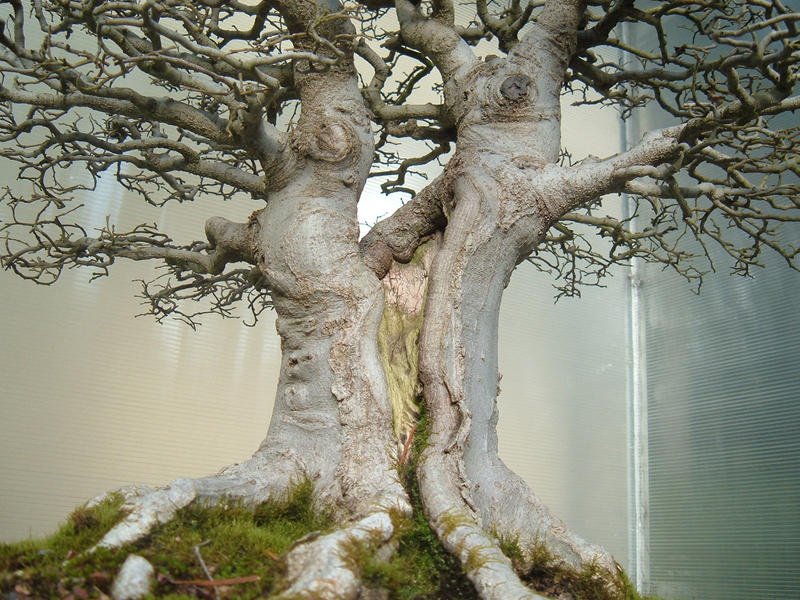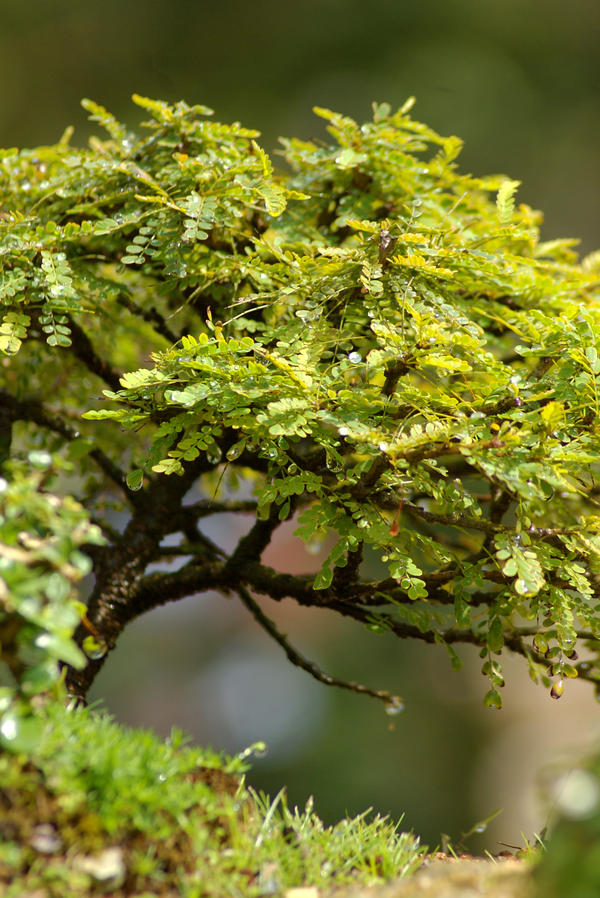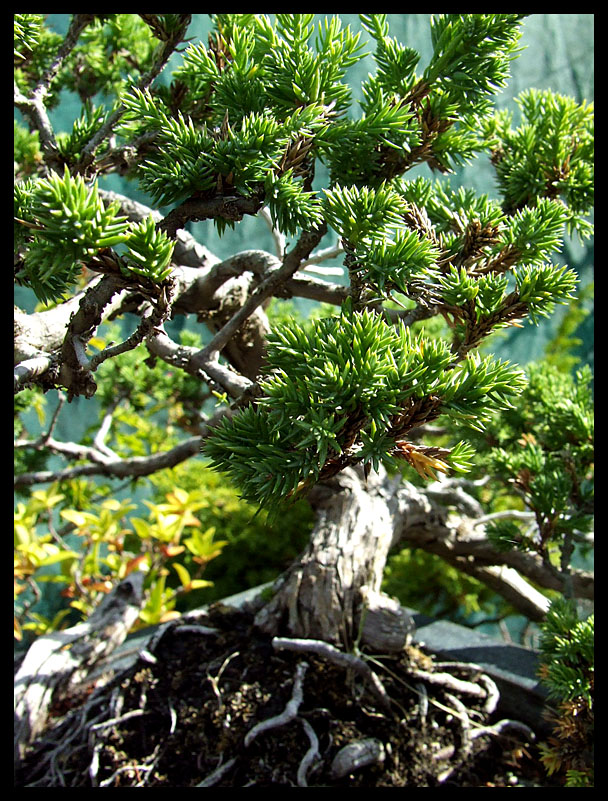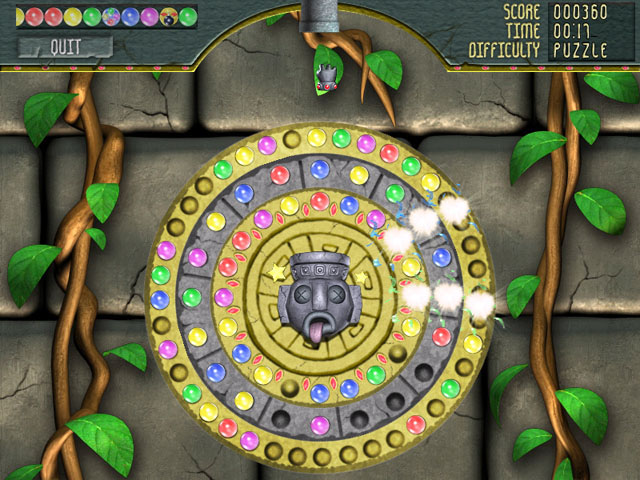Los cambios de las estaciones vienen dados por los equinoccios y los solsticios (Todos los tiempos se dan en la escala de tiempo universal TU, al final se facilita información para su uso)
Equinoccios:Los equinoccios son los dos puntos de la esfera celeste en que la eclíptica corta el ecuador celeste y se llaman "primer punto de aries o equinoccio vernal" y "primer punto de libra o equinoccio otoñal". El equinoccio vernal se produce en torno al 21 de marzo, y da paso a la primavera en el hemisferio norte y al otoño en el hemisferio sur (en este caso se denomina equinoccio otoñal). El equinoccio otoñal se produce en torno al 23 de septiembre, dando paso al otoño en el hemisferio norte y a la primavera en el hemisferio sur (en este caso se denomina equinoccio vernal).
***
|
Año | Equinoccio vernal | Equinoccio otoñal |
2009 | 20/03/2009 11:44 | 22/09/2009 21:19 |
2010 | 20/03/2010 17:33 | 23/09/2010 3:10 |
2011 | 20/03/2011 23:21 | 23/09/2011 9:05 |
| 20/03/2012 5:15 | 22/09/2012 14:50 |
2013 | 20/03/2013 11:03 | 22/09/2013 20:45 |
2014 | 20/03/2014 16:58 | 23/09/2014 2:30 |
2015 | 20/03/2015 22:46 | 23/09/2015 8:21 |
2016 | 20/03/2016 4:31 | 22/09/2016 14:22 |
2017 | 20/03/2017 10:29 | 22/09/2017 20:02 |
2018 | 20/03/2018 16:16 | 23/09/2018 1:55 |
2019 | 20/03/2019 21:59 | 23/09/2019 7:51 |
2020 | 20/03/2020 3:50 | 22/09/2020 13:31 |
2021 | 20/03/2021 9:38 | 22/09/2021 19:22 |
2022 | 20/03/2022 15:34 | 23/09/2022 1:04 |
2023 | 20/03/2023 21:25 | 23/09/2023 6:51 |
2024 | 20/03/2024 3:07 | 22/09/2024 12:44 |
2025 | 20/03/2025 9:02 | 22/09/2025 18:20 |
2026 | 20/03/2026 14:47 | 23/09/2026 0:06 |
2027 | 20/03/2027 20:25 | 23/09/2027 6:02 |
2028 | 20/03/2028 2:18 | 22/09/2028 11:46 |
2029 | 20/03/2029 8:03 | 22/09/2029 17:39 |
2030 | 20/03/2030 13:53 | 22/09/2030 23:27 |
2031 | 20/03/2031 19:42 | 23/09/2031 5:16 |
2032 | 20/03/2032 1:23 | 22/09/2032 11:11 |
2033 | 20/03/2033 7:23 | 22/09/2033 16:52 |
2034 | 20/03/2034 13:18 | 22/09/2034 22:40 |
2035 | 20/03/2035 19:03 | 23/09/2035 4:40 |
2036 | 20/03/2036 1:04 | 22/09/2036 10:24 |
2037 | 20/03/2037 6:51 | 22/09/2037 16:14 |
2038 | 20/03/2038 12:41 | 22/09/2038 22:03 |
2039 | 20/03/2039 18:33 | 23/09/2039 3:50 |
2040 | 20/03/2040 0:12 | 22/09/2040 9:46 |
2041 | 20/03/2041 6:08 | 22/09/2041 15:27 |
2042 | 20/03/2042 11:54 | 22/09/2042 21:12 |
2043 | 20/03/2043 17:28 | 23/09/2043 3:08 |
2044 | 19/03/2044 23:21 | 22/09/2044 8:48 |
2045 | 20/03/2045 5:08 | 22/09/2045 14:34 |
2046 | 20/03/2046 10:59 | 22/09/2046 20:22 |
2047 | 20/03/2047 16:53 | 23/09/2047 2:09 |
2048 | 19/03/2048 22:35 | 22/09/2048 8:01 |
2049 | 20/03/2049 4:29 | 22/09/2049 13:43 |
2050 | 20/03/2050 10:20 | 22/09/2050 19:29 |
Solsticios:Son los momentos en el que el sol alcanza su máxima posición meridional o boreal. El Solsticio de verano se produce alrededor del 21 de junio cada año, dando lugar al inicio del verano en el hemisferio norte y al invierno en el hemisferio sur. El Solsticio de invierno se produce alrededor del 21 de diciembre cada año, dando lugar al inicio del invierno en el hemisferio norte y al verano en el hemisferio sur.
*** |
Año | Solsticio de verano | Solsticio de invierno |
2009 | 21/06/2009 5:46 | 21/12/2009 17:48 |
2010 | 21/06/2010 11:29 | 21/12/2010 23:39 |
2011 | 21/06/2011 17:17 | 22/12/2011 5:31 |
| 20/06/2012 23:09 | |
2013 | 21/06/2013 5:04 | 21/12/2013 17:12 |
2014 | 21/06/2014 10:52 | 21/12/2014 23:04 |
2015 | 21/06/2015 16:38 | 22/12/2015 4:49 |
2016 | 20/06/2016 22:35 | 21/12/2016 10:45 |
2017 | 21/06/2017 4:25 | 21/12/2017 16:29 |
2018 | 21/06/2018 10:08 | 21/12/2018 22:23 |
2019 | 21/06/2019 15:55 | 22/12/2019 4:20 |
2020 | 20/06/2020 21:44 | 21/12/2020 10:03 |
2021 | 21/06/2021 3:33 | 21/12/2021 16:00 |
2022 | 21/06/2022 9:14 | 21/12/2022 21:49 |
2023 | 21/06/2023 14:58 | 22/12/2023 3:28 |
2024 | 20/06/2024 20:51 | 21/12/2024 9:21 |
2025 | 21/06/2025 2:43 | 21/12/2025 15:04 |
2026 | 21/06/2026 8:25 | 21/12/2026 20:51 |
2027 | 21/06/2027 14:11 | 22/12/2027 2:43 |
2028 | 20/06/2028 20:03 | 21/12/2028 8:20 |
2029 | 21/06/2029 1:49 | 21/12/2029 14:15 |
2030 | 21/06/2030 7:32 | 21/12/2030 20:10 |
2031 | 21/06/2031 13:18 | 22/12/2031 1:56 |
2032 | 20/06/2032 19:09 | 21/12/2032 7:57 |
2033 | 21/06/2033 1:02 | 21/12/2033 13:47 |
2034 | 21/06/2034 6:45 | 21/12/2034 19:35 |
2035 | 21/06/2035 12:34 | 22/12/2035 1:32 |
2036 | 20/06/2036 18:33 | 21/12/2036 7:14 |
2037 | 21/06/2037 0:23 | 21/12/2037 13:09 |
2038 | 21/06/2038 6:10 | 21/12/2038 19:03 |
2039 | 21/06/2039 11:58 | 22/12/2039 0:41 |
2040 | 20/06/2040 17:47 | 21/12/2040 6:34 |
2041 | 20/06/2041 23:36 | 21/12/2041 12:19 |
2042 | 21/06/2042 5:16 | 21/12/2042 18:05 |
2043 | 21/06/2043 10:59 | 22/12/2043 0:02 |
2044 | 20/06/2044 16:52 | 21/12/2044 5:44 |
2045 | 20/06/2045 22:34 | 21/12/2045 11:36 |
2046 | 21/06/2046 4:15 | 21/12/2046 17:29 |
2047 | 21/06/2047 10:04 | 21/12/2047 23:08 |
2048 | 20/06/2048 15:55 | 21/12/2048 5:03 |
2049 | 20/06/2049 21:48 | 21/12/2049 10:53 |
2050 | 21/06/2050 3:34 | 21/12/2050 16:40 |
El retorno cíclico de las estaciones El eje de rotación terrestre se mantiene apuntando durante todo el año hacia una región concreta de la esfera celeste, caracterizada por la cercanía de la estrella Polar. Las estaciones tienen lugar porque el eje de la Tierra está inclinada 23º 27' con respecto al plano de su órbita.
Las estaciones varían de un extremo al otro del mundo. En las áreas mas templadas de los hemisferios norte y sur se reconocen cuatro estaciones (primavera, verano, otoño e invierno).
En los Polos Norte y Sur hay sólo dos estaciones (invierno y verano) mientras que en los países ecuatoriales y tropicales las estaciones se dividen en aquellos periodos en los cuales hay sequías o lluvia.
El solsticio es aquel instante en que el Sol se halla en uno de los dos trópicos.
Esto ocurre el 21 de junio para el Trópico de Cáncer y el 21 de diciembre para el Trópico de Capricornio. El solsticio de diciembre hace, en el hemisferio boreal, que el día sea más corto y la noche más larga del año; y en el hemisferio austral, la noche más corta y el día más largo. El solsticio de junio hace, en el hemisferio boreal, que el día sea más largo y la noche más corta del año; y en el hemisferio austral, el día más corto y la noche más larga.
El equinoccio es aquél instante en que, por hallarse el Sol sobre el Ecuador, los días y las noches son iguales en toda la Tierra; esto ocurre anualmente el 21 de marzo y el 22-23 de septiembre.
La latitud de los trópicos no puede ser otra que 23º 27'; al igual que la de los círculos polares es 66º 33'; es decir, 90º - 23º 27'.
La Tierra, en su movimiento anual alrededor del Sol, provoca distintos tipos de iluminación. Los dos extremos contrarios de iluminación terrestre son los solsticios de verano e invierno, siendo los equinoccios de primavera y otoño idénticos en cuanto a iluminación terrestre.
Solsticios y equinoccios totalizan los cuatro instantes en que anualmente se produce un cambio de estación. El cambio de una estación a otra, así como de un estado de soleamiento a otro no se produce de forma repentina; el mismo movimiento de rotación y traslación terrestre produce un cambio constante y gradual que acontece con el sucesivo transcurrir de los días, semanas y meses.
En las regiones cercanas a los polos, el 21 de marzo, el Polo Norte recibirá la luz del Sol, mientras que sobre el Polo Sur reinará la oscuridad durante unos seis meses. A cada rotación de la Tierra, el Sol permanecerá visible sobre el horizonte durante las 24 horas mientras que al día siguiente aparecerá más alto en el cielo. Tras alcanzar alrededor del 21 de junio su máxima altura sobre el horizonte, el Sol comenzará un lento movimiento de descenso, casi una espiral vista desde el polo, que nuevamente lo llevará al horizonte alrededor del 23 de septiembre. Durante los seis meses siguientes, la luz del Sol no caerá ya sobre el Polo Norte, siendo el Sur el que disfrutará de un prolongado día con unos seis meses de iluminación o soleamiento.

En una latitud intermedia, el 21 de marzo el Sol resultará visible durante 12 horas y otras tantas durante la noche. Entre los meses que van de abril a junio los rayos del Sol calentarán el suelo durante más de 12 horas y el astro aparecerá, en cada mediodía, cada vez más alto sobre el horizonte, hasta alcanzar el 21 de junio su máxima altura. Entre los meses de junio y diciembre, el Sol aparecerá, en cada mediodía, cada vez más bajo, el 23 de septiembre se encontrará en el equinoccio de otoño para continuar su movimiento descendiente hasta el 21 de diciembre que alcanza su mínima altura sobre el horizonte, pero al día siguiente vuelve a emprender su camino ascendente hacia un nuevo año.
En el Ecuador, día y noche siempre serán iguales durante todo el año.
Debido al movimiento del Sol en su órbita (es la Tierra alrededor suyo) sobre la eclíptica, y según la segunda ley de Kepler, su velocidad no es constante y esa variación da lugar a la desigual duración de las estaciones, ya que dicha velocidad será máxima en las cercanías del perihelio (punto más cercano al Sol a lo largo de una órbita) durante el 2 ó 3 de enero y mínima en el afelio (punto más alejado del Sol a lo largo de una órbita) el 2 ó 3 de julio.
La fecha de comienzo de las estaciones oscila en un periodo de dos días respecto al año trópico, entendido como el intervalo entre dos pasos consecutivos del Sol por el Punto Aries, dura 365,2422 días solares medios. La fracción de día (0,2422) que cada año se acumula es igual a seis horas, y cada cuatro años suma un día entero, éste se recupera en el año bisiesto, agregándolo a febrero y, por consiguiente se desplaza un día el comienzo de las estaciones siguientes. Veamos a continuación una representación gráfica del retorno cíclico de las estaciones.

Para adecuarlo al horario local de cada población, habrá que sumar o restar tantas horas como diferencia tenga la localidad con respecto al U.T.C. (Tiempo Universal Coordinado) que le corresponda. El Tiempo Universal Coordinado, o UTC, también conocido como tiempo civil, es la zona horaria de referencia respecto a la cual se calculan todas las otras zonas del mundo. Es el sucesor del GMT ( Greenwich Mean Time: tiempo promedio del Observatorio de Greenwich, en Londres) aunque todavía coloquialmente algunas veces se le denomina así. La nueva denominación fue acuñada para eliminar la inclusión de una localización específica en un estándar internacional, así como para basar la medida del tiempo en los estándares atómicos, más que en los celestes.
La hora UTC de algunos países, visitantes de maya.cosmos
- Argentina : UTC-3. No se suelen emplear distintos horarios en invierno/verano . En el caso de que se use es UTC-2.
- Chile : UTC-4 en el área continental y el Archipiélago Juan Fernández y UTC-6 en Isla de Pascua (UTC-3 y UTC-5 en verano respectivamente).
- Costa Rica : UTC-6 (todo el país, todo el año).
- Ecuador : UTC-5 en el área continental y UTC-6 en Galápagos
- El Salvador : UTC-6 en todo el país, todo el año.
- España
- En el continente: UTC+1 (CET ó Central European Time ), UTC+2 en verano (CEST ó Central European Summer Time )
- Canarias : UTC, UTC+1 en verano (WET ó Western European Time )
- Guatemala : UTC-6 Se suele emplear horario para ahorro de energía. En el caso de que se use (en verano) es UTC-5.
- Guinea Ecuatorial : UTC+1
- México : UTC-6, UTC-5 en verano
- Paraguay : UTC-4. (UTC-3 en verano)
- Panamá, Peru, Colombia : UTC-5
- Puerto Rico, Venezuela, Republica Dominicana, Bolivia : UTC-4
- Uruguay* : UTC-3.
Los países con un signo * siguen horario de verano (hora para ahorrar luz del día): agregan 1 hora en verano.
UTC-11* Islas Midway
* Niue
* Samoa
* Samoa Americana
UTC-10 (HST - Hawaiian Standard Time)
* Atolón Johnston
* Estados Unidos (Hawaii)
* Estados Unidos (Islas Aleutianas de Alaska)*
* Polinesia Francesa (Archipiélago Sociedad, incluidos Tahití, Archipiélago Tuamotu, Islas Tubuai)
UTC-9:30* Polinesia Francesa (Islas Marquesas)
UTC-9 (AKST - Alaska Standard Time)
* Estados Unidos (Alaska*)
* Polinesia Francesa (Islas Gambier)
UTC-8 (PST - Pacific Standard Time)
* Canadá (Colombia Británica*, Yukón*)
* Estados Unidos (California*, Idaho (norte)*, Nevada*, Oregón*, Washington*)
* México (Baja California*, Sonora*)
UTC-7 (MST - Mountain Standard Time)
* Canadá (Alberta*, Territorios del Noroeste*, Nunavut (Mountain)*)
* Estados Unidos (Arizona, Colorado*, Idaho (sur)*, Montana*, Nebraska (oeste)*, Nuevo México*, Dakota del Norte (oeste)*, Dakota del Sur (oeste)*, Utah*, Wyoming*)
* México (Baja California Sur*, Chihuahua*, Nayarit*, Sinaloa*)
UTC-6 (CST - Central Standard Time, tiempo America Central)
* Canadá (Manitoba*, Nunavut (Southampton Island), Nunavut (Centro)*, Ontario (Oeste)*, Saskatchewan)
* Chile (Isla de Pascua)
* Costa Rica
* Ecuador (Islas Galápagos)
* Estados Unidos (Alabama*, Arkansas*, Illinois*, Iowa*, Kansas*, Kentucky (oeste)*, Luisiana*, Minnesota*, Misisipí*, Misuri*, Nebraska (este)*, Dakota del Norte*, Oklahoma*, Dakota del Sur (este)*, Tennessee (oeste)*, Texas*, Wisconsin*)
* México ( Aguascalientes*, Campeche*, Chiapas*, Coahuila*, Colima*, Durango *, Guanajuato*, Guerrero*, Hidalgo*, Jalisco*, México*, Michoacán*, Morelos*, Nuevo León *, Oaxaca *, Puebla*, Querétaro*, Quintana Roo*, San Luis Potosí*, Tabasco*, Tamaulipas*, Tlaxcala*, Veracruz*, Yucatán*, Zacatecas*)
UTC-5 (EST - Eastern Standard Time, tiempo estándar del este)
* Brasil (Acre)
* Canadá (Nunavut (este)*, Ontario*, Quebec*)
* Colombia
* Cuba*
* Ecuador
* Estados Unidos (Connecticut*, Delaware*, Distrito de Columbia*, Florida*, Georgia*, Indiana, Kentucky (este)*, Maine*, Maryland*, Massachusetts*, Michigan*, Nueva Hampshire*, Nueva Jersey*, Nueva York*, Carolina del Norte*, Ohio*, Pensilvania*, Rhode Island*, Carolina del Sur*, Tennessee (este)*, Vermont*, Virginia*, Virginia Occidental *)
* Haití
* Islas Caimán
* Islas Turcas y Caicos*
* Jamaica
* Panamá
* Perú
UTC-4.30* Venezuela (desde el 9 de diciembre de 2007).
UTC-4 (AST - Atlantic Standard Time, tiempo estándar de la costa atlántica)
* Anguila
* Antigua y Barbuda
* Antillas Neerlandesas
* Aruba
* Barbados
* Bolivia
* Brasil (Amazonas, Mato Grosso*, Mato Grosso do Sul*, Para (oeste), Rondonia, Roraima)
* Canadá (Labrador*, Nuevo Brunswick*, Nueva Escocia*, Isla del Príncipe Eduardo*)
* Chile*
* Dominica
* Granada
* Guadalupe
* Guyana
* Islas Malvinas*
* Islas Vírgenes
* Martinica
* Montserrat
* Paraguay*
* República Dominicana
* Saint Kitts y Nevis
* Santa Lucía
* San Vicente y las Granadinas
* Trinidad y Tobago
UTC-3:30 (NST - Newfoundland Standard Time)
* Canadá (Terranova*)
UTC-3* Argentina*
* Bahamas*
* Brasil (Alagoas, Amapa, Bahia*, Ceara, Distrito Federal*, Espirito Santo*, Goias*, Maranhao, Minas Gerais*, Para (este), Paraiba, Parana*, Pernambuco, Piaui, Río de Janeiro*, Rio Grande do Norte, Rio Grande do Sul*, Santa Catarina*, Sao Paulo*, Sergipe, Tocantins*)
* Guayana Francesa*
* Groenlandia
* San Pedro y Miquelón*
* Surinam
* Uruguay
UTC-2* Bermudas*
* Brasil (Fernando de Noronha)
UTC-1* Cabo Verde
* Portugal (Azores*)
UTC (WET - Western European Time, tiempo de Europa occidental, también llamado
GMT)
* Burkina Faso
* Côte d'Ivoire
* España (Islas Canarias)*
* Islas Faroe*
* Gambia
* Ghana
* Guinea
* Guinea-Bissau
* Irlanda*
* Islandia
* Liberia
* Malí
* Marruecos
* Mauritania
* Portugal*
* Reino Unido*
* Santa Helena
* São Tomé e Príncipe
* Senegal
* Sierra Leona
* Togo
UTC+1 Tiempo Central Europeo (CET - Central European Time)
* Albania*
* Alemania*
* Andorra*
* Angola
* Austria*
* Bélgica*
* Benín
* Bosnia y Herzegovina*
* Camerún
* Chad
* Congo
* Congo, R.D. (Kinshasa, Bandungu, Bajo Zaire, Ecuador)
* Croacia*
* Dinamarca*
* Eslovaquia*
* Eslovenia*
* España peninsular e Islas Baleares*
* Francia*
* Gabón
* Gibraltar*
* Guinea Ecuatorial
* Hungría*
* Italia*
* Liechtenstein*
* Luxemburgo*
* Malta*
* Mónaco*
* Montenegro*
* Namibia*
* Países Bajos*
* Níger
* Nigeria
* Noruega*
* Polonia*
* República Centroafricana
* República Checa*
* República de Macedonia*
* San Marino*
* Serbia*
* Suecia*
* Suiza*
* Svalbard y Jan Mayen*
* Túnez
Los países que se rigen por la CET en verano lo hacen por la CEST (Central European Summer Time) que es UTC+2.
UTC+2 (EET - Eastern European Time, tiempo de Europa del este)
* Bielorrusia*
* Botswana
* Bulgaria*
* Burundi
* Cisjordania*
* Chipre*
* Congo, R.D. (Kasai Occidental, Kasai Oriental, Alto Zaire, Shaba)
* Egipto*
* Estonia
* Finlandia*
* Franja de Gaza*
* Grecia*
* Israel*
* Jordania
* Lesotho
* Letonia*
* Líbano*
* Libia
* Lituania
* Malawi
* Moldavia*
* Mozambique
* Ruanda
* Rumania*
* Rusia (Zona 1*, incluido Kaliningrado)
* Siria*
* Suazilandia
* Sudáfrica
* Turquía*
* Ucrania*
* Zambia
* Zimbabue
UTC+3 (MSK tiempo de Moscú)
* Arabia Saudita
* Bahrein
* Comoras
* Eritrea
* Etiopía
* Irak*
* Kenia
* Kuwait
* Madagascar
* Mayotte
* Catar
* Rusia (Zona 2*, incluyendo Moscú y San Petersburgo)
* Somalía
* Sudán
* Tanzania
* Uganda
* Yemen
* Yibuti
UTC+3:30* Irán*
UTC+4* Emiratos Árabes Unidos
* Georgia*
* Kazajstán (Oeste)*
* Mauricio
* Omán
* Reunión
* Rusia (Zona 3*)
* Seychelles
UTC+4:30* Afganistán
UTC+5* Armenia
* Azerbaiyán*
* Kazajstán (Centro)*
* Kirguizistán*
* Maldivas
* Pakistán
* Rusia (Zona 4*, incluyendo Ekaterinburg y Perm)
* Tayikistán
* Turkmenistán
* Uzbekistán
UTC+5:30* India
UTC+5:45* Nepal
UTC+6* Bangladesh
* Bután
* Kazajstán (Este)*
* Rusia (Zona 5*, incluyendo Novosibirsk y Omsk)
* Sri Lanka
UTC+6:30* Islas Cocos
* Myanmar
UTC+7* Camboya
* Islas Christmas (Australia)
* Indonesia (Oeste)
* Laos
* Rusia (Zona 6*)
* Tailandia
* Vietnam
UTC+8 (AWST - Australian Western Standard Time, tiempo estándar del oeste australiano)
* Australia (Oeste)
* Brunei Darussalam
* China
* Filipinas
* Hong Kong
* Indonesia (Centro)
* Macao
* Malasia
* Mongolia*
* Rusia (Zona 7*)
* Singapur
* Taiwán
Nota: China tiene el mismo horario en toda la extensión de su territorio, lo cual hace que esta zona horaria sea excepcionalmente ancha. En el extremo oeste de China el sol está en lo más alto a las 3 pm y en el extremo este a las 11 am.
UTC+9* Corea del Norte
* Corea del Sur
* Indonesia (Este)
* Japón (Japan Standard Time - JST)
* Palau
* Rusia (Zona 8*, incluyendo Yakutsk)
* Timor Oriental
UTC+9:30 (ACST - Australian Central Standard Time)
* Australia (Broken Hill, NSW; Norte; Sur *)
UTC+10 (AEST - Australian Eastern Standard Time)
* Australia (Capital*, Nueva Gales del Sur*, Queensland, Victoria*, Tasmania*)
* Guam
* Islas Cook
* Islas Marianas del Norte
* Micronesia (Yap y Chuuk)
* Papúa Nueva Guinea
* Rusia (Zona 9*, incluyendo Vladivostok)
UTC+10:30* Australia (Lord Howe Island*)(DST sólo 0:30)
UTC+11* Islas Salomón
* Micronesia (Kosrae y Pohnpei)
* Nueva Caledonia
* Rusia (Zona 10*)
* Vanuatu
UTC+11:30* Isla Norfolk
UTC+12* Fiyi
* Islas Marshall
* Isla de Wake
* Kiribati (Islas Gilbert)
* Nauru
* Nueva Zelanda (Aotearoa)*
* Rusia (Zona 11*)
* Tuvalu
* Wallis y Futuna
UTC+12:45* Nueva Zelanda (Aotearoa) (Islas Chatham*)
UTC+13* Kiribati (Islas Phoenix)
* Tonga
UTC+14* Kiribati (Islas Line)






















